|
Went on a short flight in a Lear 23 Today.  
|
|
|
|

|
| # ? Apr 25, 2024 04:59 |
|
It's so cute. The dice for throttle handles owns.
|
|
|
|
LOVE the dice!
|
|
|
|
Minto Took posted:The dice for throttle handles owns.
|
|
|
|
Rolling onto final. Baby needs a new set of landing gear! *jiggle jiggle* *roll* Snake eyes! Go around, go around!
|
|
|
|
grover posted:Little dice on a ton of toggle switches, too. Ever have any issues on that aircraft of switches flipping themselves in particularly rough turbulence? Yeah, noticed those too. That's a cool airplane owner.
|
|
|
|
helno posted:Went on a short flight in a Lear 23 Today. gently caress. Yes.
|
|
|
|
Minto Took posted:Yeah, noticed those too. That's a cool airplane owner. I like that the dice says 23.
|
|
|
|
Minto Took posted:Yeah, noticed those too. That's a cool airplane owner. Dave was pretty awesome. His previous jet was a Mig-17.
|
|
|
|
That dude is truly living the dream.
|
|
|
|
helno posted:Dave was pretty awesome. His previous jet was a Mig-17. Out of curiosity, is this guy now or was he ever a pilot for Spirit Air? Did he keep his Mig in Kalamazoo?
|
|
|
|
ACHTUNG ZEPPELIN VII: Luftschiffkapitän Strasser Abenteuer in Wolkenkuckucksheim The Story of German Airships in the First World War Wolkenkuckucksheim is a useful German word meaning “cloud-cuckoo land”. Usually meaning naïve optimism in the face of facts, it describes perfectly the airship squadron's behavior in the face of incinderary bullets. Despite mounting evidence that British defenses had taken a serious leap in effectiveness, Strasser, still dreaming of knocking Britain out of the war via airship attack, refused to see it. His orders to the Zeppelin squadron, and its operations would remain unchanged. It would take the loss of some of his most skilled crews (not to mention his close friends) before the leader of airships would acknowledge this truth. And it seemed fate really wanted to underline the whole “hydrogen airships can be treacherous” thing to Strasser, as on September 16th, 1916, the training airships L 6 and L 9 were destroyed in their hangers, the first in a series of accidents. L 6 had been 'hung up' and was having her hydrogen cells flushed and replaced, and for reasons unknown there was an explosion amidships. Flames ripped up L 6's midsection and soon spread to L 9, causing everyone involved to flee the hanger. Both ships exploded and burned for some 2 hours, blowing most of the roof off the hanger. In his report to his superiors, Strasser hypothesized that bits of rust from the hydrogen pressure tanks had entered into the Airship via the hydrogen hose and became statically charged, but no cause was ever conclusively proven. September 23rd saw a start of the raiding moon period, and a new raid was launched by the Zeppelin squadron. Strasser told them to aim for London if conditions were favorable, but if not, to attack the midlands. Eight older airships flew over the North Sea and found clear conditions, and so steered for the midlands; the four new “thirties” lead by Mathy flew over Belgium and approved London from the south. Of the eight older ships, only L 17 captained by Kptl. Hermann Kraushaar had real success. Flying the furthest inland of the midland raiders, L 17 saw lit blast furnaces and industrial works ahead, and attacked. Over Nottingham, the L 17's first dropped bomb severed the telephone wire between the guns and the searchlights defending the city, and that combined with a light mist negated the local defenses. Carefully aimed, the bombs missed the factories but completely destroyed a freight rail yard servicing them. As L 17 was returning home at 1:10 AM, she observed far to the south the characteristic shape of a crashing and burning airship. The R class ships coming up from the south, then, were to have a more dramatic time of it. L 30 captained by Von Buttlar reported bombing eastern London, which is somewhat odd, as the British records definitely state L 30 was nowhere near London. In fact, it's a mystery to this day where exactly L 30 was between the time she left the Belgian coast at 8:30 and 3 AM, when she passed over a German Lightship on her way home. Bocker was in his new Command, the L 33. Using the Thames for navigation, L 33 steered directly for London, a move that thanks to it's boldness and speed caught the defenders off guard. At 11:30 she dropped 2 parachute flares and once again got lucky, blinding a gun crew directly below her. Making it to the center of the city, Bocker attacked warehouses on Stratford, burning down a oil depot and a lumber yard. In addition, a block of tenements was hit, killing most of the occupants, and a popular pub, The Black Swan, killing four more. Bocker prudently did this bombing from 13,000 ft, but London had the strongest air defenses of anywhere in Britain. If you've been reading these posts, you've read a few “your Zeppelin is hosed” stories by now, so I think you can appreciate how badly Bocker's luck ran out when I tell you over London L 33 had a AA shell explode inside one of her lifting cells, just behind her forward gondola. How this didn't burn the ship down, I've no idea – I can only guess that the pure hydrogen environment inside the cell smothered any flames. The shell of course destroyed that lifting cell, and shrapnel made holes in most of the other cells. The crew was frantic in their efforts to fix the damage by patching the leaks with canvas and glue, the sail-maker being overcome at one point by hydrogen fumes. Bocker turned to the sea and began jettisoning machine guns, but with so many leaks, L 33 was doomed. As the crippled L 33 made a run for it, the defenders on the ground reported she turned and released a smoke screen; this was actually L 33 venting all her water ballast.  A postcard of L 33 taking a shell hit. The caption was "A nasty jar for the babykillers." Losing 800 feet a minute, Bocker red-lined her six engines and used whatever dynamic lift L 33's cigar fuselage could get. Then things actually got worse, as L 33 was attacked by an airplane. The pilot was Lt. A de B Brandon, who you may remember as the pilot who attacked L 15 in similar circumstances in a previous post. Lt. Brandon had seen L 33 as she was escaping London's spotlights, but his fuel pump then broke. So he was having to manually pump fuel, work his slanty machine gun, and fly his plane, all at the same time: “After putting a drum of ammunition I came up behind the Zeppelin on raising the gun jerked it out of its mounting, the gun and the yoke falling across the nacelle. I managed to replace the the gun but in the meantime had passed under and past the Zeppelin. I turned and passed along it again, but we passed each other too quickly for me to take aim. On turning I came up from behind and fixed a drum of ammunition. The Brock ammunition seemed to be bursting all along it, but the Zeppelin did not catch fire. I turned again and put on a fresh drum and came up from behind and fired again. The gun jammed after 9 rounds. I now decided to get above the Zepp and went on climbing, but there was a large bank of grey cloud all around the horizon and it was impossible to see the Zeppelin against it, after I got level with the Zeppelin.” L 33 struggled on after this - Bocker hoping to reach the sea so he could sink the L 33 - but it was not to be. L 33 soon stalled and fell in a field near a farmer's house. Amazingly, Bocker and his men had not only not been set on fire, they all walked away from the wreck unscathed. The L 33 was then set alight with signal flares. A little while later, a special constable Nicholas was bicycling toward the fire when he encountered Bocker and his crew. Bocker asked in English “how far is it to Colchester” and the constable told him, but thought it worth tagging along with this brace of foreign gentlemen. A second, and then a third constable-on-a-bicycle showed up, and they decided to escort this odd group to the local post office. There, Bocker surrendered, and he and his crew were bicycle-escorted into captivity.  L 33 had so little hydrogen left that the fire did little damage to the frame, and it was closely studied by British Naval Intelligence. L 31 and L 32 stuck together, and had made their way almost to London, before Peterson in L 32 had engine trouble and had to veer off. Mathy in L 31 crossed Tunbridge Wells at 11:30, following a railway line into the city. He periodically checked his position with parachute flares, and the last one he dropped before London blinded the local gun crews. Flying south to north, L 31 bombed the south London suburbs, flew over the heart of the city, then bombed the north London suburbs. Mathy surprisingly missed the really juicy targets of the city center thanks to a little confusion in navigation; Mathy's war diary indicates he thought he bombed central London. At any rate, Mathy once again had bombed the capital and given the rasberry to the defenders. L 32 was not as fortunate. The mechanical problems L 32 had to contend with were evidently fairly bad, as she was south east of the city still when Mathy had made his attack. Crossing into clear airspace some 12 miles east of the city, the defenses instantly picked her up, and heavy AA fire scored two hits. L 32 jettisoned her bombs and turned east, but the action had also been seen by the fighters on patrol, who at this time could scarcely miss the giant airship in the searchlights. Set afire by the RFC planes, L 32 crashed and burned for some 45 minutes, killing Peterson and his crew of 22. One witness reported on the end of the L 32: “Those few moments afforded a wonderful spectacle. Flames were bursting out from the sides and behind, and, as the gasbag continued to fall, there trailed away long tongues of flame, which became more and more fantastic as the falling monster gained impetus.” The next morning, eager beavers from the Naval Intelligence Division examined the wreck and found the burned but legible code book of the German Navy. It's not clear why L 32 had it; when raiding Britain it was supposed to be left behind. Whatever the reason, it proved a priceless intelligence success for the British, for as you might remember the Imperial Navy had changed its codes after Jutland. The loss of the SL 11 to aircraft could be rationalized away, but the loss of two of the newest, most modern Zeppelins, lead by two of the most experienced captains, could not. The airship crews were brave men. Like the submarine crews, they formed an elite within the navy and were handpicked for their job, but the memory of fallen comrades and their burning funeral pyres was not something that could be overcome with bravery. Now it seemed a fiery end was not a matter of if, but when. The night before he was killed, one of Peterson's men said “Death will come so quickly that there will be no time for deliberation or even instinctive action.” This was not true for all; Peterson chose to jump instead of dying in flames.  Supposedly, the impression left on the ground by Peterson. Strasser's orders for the next raid on September 25th reflected this new reality, ordering all ships to concentrate on the Midlands, save the two R-class airships, which were told to attack as usual “in the south, main target London, with caution being ordered in case of clear weather.” Martin Dietrich in L 22 managed not only to find Sheffield, but bomb its armament factories. Only thanks to extraordinary luck did the bombs not manage to touch off a fire that would have seen severe damage done. The rest of the P and Q airships were rebuffed by defenses and bedeviled by bad weather, and accomplished little, as in the last raid. L 30 found London absolutely clear, and reported bombing Ramsgate, which history shows was not bombed. Once again Von Buttlar found some sort of limey Bermuda triangle to fly through, since it's not really clear what she was up to that night. Mathy in L 31 finding the same clear conditions decided to bomb the naval base at Portsmouth, saying to his crew “nobody has ever been, and it is sure to be very interesting!” Using the coast to navigate, L 31 approached Portsmouth by sea. As L 31 started her bombing run, searchlights illuminated her, and the now-expected AA guns opened fire. Fortunately for Mathy, the AA crews were untrained, and they all missed rather badly. Unfortunately for Mathy, the searchlights and shellfire proved so blinding that L 31 dropped her bombs into the sea. British intelligence assessing the raid knew Mathy was in command, and in their post-raid reconstruction of events, decided that the bomb release mechanism must have failed, dismissing the 'confused by explosions and brightness' scenario as unlikely, a unconscious complement to the airship captain. As for Mathy's crew, one of them later wrote a book of his experiences in the Naval Airship squadron, and it seems that the crew were suffering from combat fatigue. “Even in the mess hall, our old cheerfulness is gone. We discussed our heavy losses, particularly, of course, our most recent ones. Our nerves are on edge, and even the most energetic and determined cannot shake off the gloomy atmosphere. It is only a question of time before we join the rest. Everyone admits that they feel it. Our nerves are ruined by mistreatment. If anyone should say he was not haunted by visions of burning airships, then he would be a braggart. But nobody makes this assertion; everyone has the courage to confess his dreams and thoughts. The commander act no differently than of old, but it is only natural that his appearance should become more serious and his features more sharply and deeply graven in his face. 'We will be next, Pitt!' growls our first elevator man, Chief Quartermaster's mate Peters. 'You're mad!' I defend myself. 'We have already made a hundred and twenty successful war flights; we serve under the most outstanding commander. I trust our lucky star!' He looks earnestly at me. 'Pitt, you know that I'm no coward; out in eastern Asia we made many hair-raising voyages through typhoons. But I dream constantly of falling Zeppelins. There is something in me that I can't describe. It's as if I saw a strange darkness before me, into which I must go.” The next raid happened October first, and despite these fears, L 31 took part as she always did. The orders were the same: older ships attack the midlands, the 'thirties' attack south, if prudent London. The weather was as foreboding as the mood in the airship squadron; over the German bight squalls and clouds gave way to a solid cloud ceiling over Britain, with rain, snow, and hail at higher altitudes. He's how bad the weather was: L 21 spent ten hours without seeing land or sea. Like the rest of the older airships, L 21 was trying to find Manchester or Sheffield and failing miserably, having to deal with coatings of ice, snow clouds, and mist. L 21 did get one moment of clarity, where the crew could make out London, and above it, an airship. Icing then became so heavy L 21 had to jettison her bombs and head home. L 24 was in similar circumstances. Captained by a Kapt. Koch, L 24 had intended for Manchester but became similarly lost. The wind fortunately blew ships south, rather than north, and like L 21 she made out a airship high over London which burst into flames and crashed. Koch thought he then bombed an outer suburb of London, but actually bombed an airfield, killing one soldier but doing no other damage. On the way home, the tail-shaft of the forward propeller broke, and Koch was forced to send the mechanic out onto the back of the (icy) forward gondola to keep the prop from windmilling. Several hours later, the 18 ft prop broke free and vanished into the predawn darkness. (Oh, and once again L 30 managed to fly to Narnia or something, as it's not clear where the hell they were.) The casualty that night was L 31. Mathy, bold to the last, evidently thought the weather might provide sufficient cover from London defenses as it had for him several times previously. Coming up from the south, Mathy veered off to the north when searchlights at the city's edge began to close on him. Taking another tack, Mathy maxed his altitude and tried again to approach London, this time from the North-East. He then tried a novel tactic: with the wind at his back, he shut down all engines, and L 31 silently drifted over the outer ring of defenses. The tactic worked, but when he started his engines again the defenses picked L 31 up almost instantly. Four patrolling aircraft banked to intercept; L 31 evidently saw this, as she dropped all her bombs and began to climb. By the time Second Lieutenant WJ Tempest caught up with L 31, she had already climbed past the range of the AA guns and was still climbing. Like Lt. Brandon, his fuel pump had failed at the critical moment, so he was manually pumping his fuel while he attempted to catch the fleeing airship. “...I dived straight at (L 31), firing a burst straight into her as I dived. I let her have another burst as I passed under her, and banking my machine over, sat in under her tail and flying along underneath her, pumped lead into her for all I was worth. I could see tracer bullets flying from her in all directions, but I was too close under (L 31) for her to concentrate on me. As I was firing, I noticed her begin to go red inside like a Chinese lantern and then flame shot out of the front part of her and I realized she was on fire. She then shot up 200 ft, paused, and came roaring down straight at me before I had time to get out of the way. I nosedived for all I was worth, with the Zepp tearing after me, and expected every minute to be engulfed in flames. I put my machine into a spin and managed to corkscrew out of the way as she passed me, roaring like a furnace.” L 31 fell to earth near Potter's Bar, the forward half of the fuselage crumpling into a great oak tree. The rear half fell in a field several hundred feet away. Astonished villagers rushed to the scene, and found an officer who had evidently jumped from several thousand feet, as he was on his back, stuck into the earth like a spike. (Many of L 31's crew choose to meet their maker by jumping rather than burning.) The man was amazingly still alive, but expired shortly after the first people arrived. His identity disc later revealed him to be none other than Kaptlt. Mathy, L31. Mathy's death privately devastated Strasser, who never forgot his operational alter-ego. To Mathy's widow, Strasser wrote he was a “cheerful, helpful, a true comrade and friend, high in the estimation of his superiors, his equals, and his subordinates.” The current raiding period was mercifully over, and the naval airship division for a time could concentrate on Naval scouting. Scheer (who as far as I can tell, unaware as to how close he came to disaster last time) wanted to try his Sunderland plan again, but then finally got permission on October 6th to use his U-boats to blockade Britain. While the Imperial Fleet did sally fourth again with a circle of Zeppelins, but the fleet didn't go very far, and the Zeppelins suffered a spate of breakdowns. The weather remained terrible throughout the next raiding period, and no bombing flights were attempted. The squadron was reinforced with three new R-class airships: L 34, L 35 and L 36. We rejoin the airship squadron at noon, November 27th. A party is in progress; it's the birthday of Max Dietrich, captain of L 34, and cakes have been baked and there are decorations and everything. Suddenly, Stasser's adjutant bursts in with the long awaited news: “Gentlemen, attack orders: the industrial area of middle England, splendid prospects, the first ship is to be in the air at one PM at the latest!” As everybody rushes out, the captain of the L 21, Kurt Frankenberg, shouts “Leave the birthday decorations, we'll celebrate tomorrow!” The day, filled with mist and clouds became clear as a bell as it grew dark, the sea a black horizon under a star-filled sky. An Aurora Borealis made the night as bright as a full moon, the commander of L 36 complaining at 10 PM it was still bright enough for him to read his watch. The northern lights vanished by 11, but it was still an exceptionally bright night. For once (possibly because of the brightness) the airships could stay together, with the R-class ships heading generally north toward Newcastle and the older ships remaining in the midlands. As soon as this northern group crossed the coast, a searchlight picked up L 34, and Dietrich, not wishing to be too bold this night, turned, bombed west Hartepool, doing moderate damage, and began heading out to sea. It was too late. A RFC fighter had already picked him up, and after a few passes with the machine gun, L 34 was burning and plunging into the sea. L 35, close by and suffering from technical problems that limited her altitude, gave up on the raid and headed home. In fact, the night was so clear that all the attacking airships could make out the end of L 34, even those some 70 miles away. The rest of the attackers found heavy AA; L 22 was peppered with shell fragments, and only by the MacGyver-like ingenuity of Captain Hollender allowed L 22 to limp home to Belgium. With all cells leaking and two already empty, as soon as L 22 left Britain behind, Hollender brought L 22 down to 2000 ft. The pressure change warmed the gas cells, making them expand, and generate more lift (not to mention that thicker air also adding more lift.) As fuel, spare parts, and machine guns were thrown overboard, the electrical system failed, and a distress message had to be composed by flashlight. Dawn found L 22 still airborne, and the sun warmed the gas cells again, giving enough lift to make it to the Hague base. After dropping everything detachable, included the last of the fuel and the parachutes(?!) the ship was still over 3 tons heavy, but the damage on landing was relatively minor. And so the squadron returned, only to discover a second airship had been shot down by enemy aircraft: L 21. She had several times during the night encountered enemy planes, and every time the shrewd ship-handling of Kaptlt. Frankenberg had gotten L 21 past the sentinels without problems. Making her way back from the midlands after bombing some burning waste heaps and Iron smelters, L 21 had passed near the Great Yarmouth air station, where aircraft were aloft and waiting for her. Past the coast and out to sea, the predawn light betrayed her presence, and she was attacked and destroyed in short order. This latest raid made Strasser face the truth: airplanes had defeated his beloved skyships. (I imagine Strasser realizing this while walking alone through the mess hall, still festooned with birthday decorations, two delicious cakes forlorn and uneaten.) If the Naval airship division continued to attack and take casualties as had been the norm for the past six months, there would be no airship division at all come June 1917. Strasser, finally willing to see that current tactics were no longer feasible, began to think of counters to airplanes and their incendiary bullets. One final raid was attempted, on December 28th. Ordered explicitly to attack only with cloud cover, the wind rose, and the airships were recalled an hour after leaving their bases. Yet it seemed 1916 had one more kick in store for the naval luftschiffe men. SL 12, another Schutte-Lanz airship returning from this raid attempted to land at Ahlhorn and a strong wind drove her bow against the gasometer, splitting it open. Not wanting to fly into a freshening wind and further damage the ship, her captain landed her outside the base. That night, high winds tore SL 12 apart, leaving nothing in the morning but tattered cloth and wooden girders. Another accident happened on the same day. At Torden base, L 24 was being walked into her hanger when the after tackle snapped, and she was driven into the hanger roof. Fire started almost instantly, and both L 24 and the other airship in the hanger, L 17, burned and were completely destroyed. So despite a heroic effort, the year ended in uncertainty and a measure of defeat for the Zeppelinauts. In 1915 815,865 pounds worth of damage was done, while in 1916 despite many more raids the amount was 594,523 pounds. (It must be remarked though, that the 1915 total included a half million pounds damage done in just one night by Mathy in L 13.) While only a single Zeppelin fell to defenses in 1915, the tally in 1916 was 6, a great proportion of which were irreplaceable veterans in the latest airships. The Army for one was eager to try a new weapon of strategic bombing: airplanes. The twin-engined Gotha bomber had been flight tested that autumn, and would soon be ready for action. So what was next for German airships? Images  The crew of L 31, showin' off their airship flashes and a lot of Iron Crosses, first and second class.  The remains of L 32.  The remains of L 32's forward gondola, flipped over.   More of the remains of L 33. Notes 1. Bocker was exchanged in 1918 with the usual vow to not be engaged in any combat role, and finished the war as a instructor in the Zeppelin training school. 2. Pitt Klein, who wrote the extract on Mathy's crew before L 31's last flight was left behold with three other crewmen on the October 1st raid. Nebakenezzer fucked around with this message at 17:48 on Jun 26, 2012 |
|
|
|
Never stop posting ever and/or write a book.
|
|
|
|
I love the narratives you're building Neb, thank you.
|
|
|
|
I'm actually pretty sure he's the world's leading zeppelin expert now.
|
|
|
|
VikingSkull posted:I'm actually pretty sure he's the world's leading zeppelin expert now. Lol, I wish. There are people actually building or planning to build airships, and they are the real experts. Sigh, for a job at one of those places... They have made more Pokemon planes?   
|
|
|
|
I don't give a gently caress about pokemon but I kind of like those liveries, is that weird?
|
|
|
|
If I were an eight year old kid, getting to ride on one of those would be the BEST THING EVER.
|
|
|
|
Someone just put this in the OP so everyone can enjoy hot Zeppelin action please. (ok, maybe start on page 3 or something)
|
|
|
|
More airliners need more wacky liveries.
|
|
|
|
okay, so I'm copying this straight out of a book called "I Learned About Flying From That"quote:I'll Never Do That Again http://www.amazon.com/Learned-About-Flying-From-That/dp/1933231246/ref=sr_1_1?ie=UTF8&qid=1340766682&sr=8-1&keywords=1933231246
|
|
|
|
One of my C-130s fighting in Colorado Springs
|
|
|
|
KYOON GRIFFEY JR posted:I don't give a gently caress about pokemon but I kind of like those liveries, is that weird? How about EVA's Hello Kitty planes? 
|
|
|
|
A buddy of mine is heading out to the SAC museum next month, and in the course of bragging on it had me wondering a couple things. First, the B-36 and other compound-thrust beasties like the Neptune and C-119 and whatever else, did they have separate jet fuel tankage? or were the turbines burning avgas? Second, looking at the F-101 Voodoo, it is interesting that the only-slightly-later from the same manufacturer F-4 has all the dihedral wing anhedral tail mess going on to enhance lateral stability, but the F-101 doesn't. Was the F-101 notably scarier to fly? or did it not need that? Anybody know? Anybody have totally baseless guesses? [edit] Internet says B-36's burned avgas in the turbines. Neat, huh? Slo-Tek fucked around with this message at 22:11 on Jun 27, 2012 |
|
|
|
Slo-Tek posted:A buddy of mine is heading out to the SAC museum next month, and in the course of bragging on it had me wondering a couple things. Jet engines, especially early ones, are actually quite happy burning avgas for a limited amount of time. The engines on the B-36 had a few modifications to their combustors so that they could burn avgas without restrictions (most engines will have a maximum number of hours allowed between overhauls that avgas can be burned). As for the Voodoo, I know a guy who flew them for the Canadian Forces for a dozen or so years; my impression from the stories he told was that it was a reasonable nice aircraft to fly, but not all that nice to fly as a fighter. The Voodoo was designed from the outset as an interceptor and was never really suited to turning-and-burning in aerial combat. Let me put it this way; F-104s could turn circles around the F-101s all day long. The Voodoo did have some rather serious handling issues; it could develop a bad case of inertia coupling if you rolled the aircraft through more than three consecutive rolls at maximum roll rate - serious enough that the aircraft would likely depart controlled flight. Also, takeoff and landing speeds were so high that in an afterburner takeoff at max weight and high air temperature, you'd have to raise the landing gear while you were still rotating the aircraft so that you wouldn't exceed the maximum retraction speed for the landing gear.
|
|
|
|
So I've discovered the joys of ATC recordings on Youtube. Anyone wanna go anywhere at 10,000 feet? Anyone? Stupid pilots gently caress ya'll, this is an emergency JFK is pretty rough JFK is also really funny So many on here are hilarious. Seizure Meat fucked around with this message at 01:02 on Jun 28, 2012 |
|
|
|
Slo-Tek posted:A buddy of mine is heading out to the SAC museum next month, and in the course of bragging on it had me wondering a couple things. MrChips pretty much covered the answers, but here's some obligatory SAC Museum pictures: 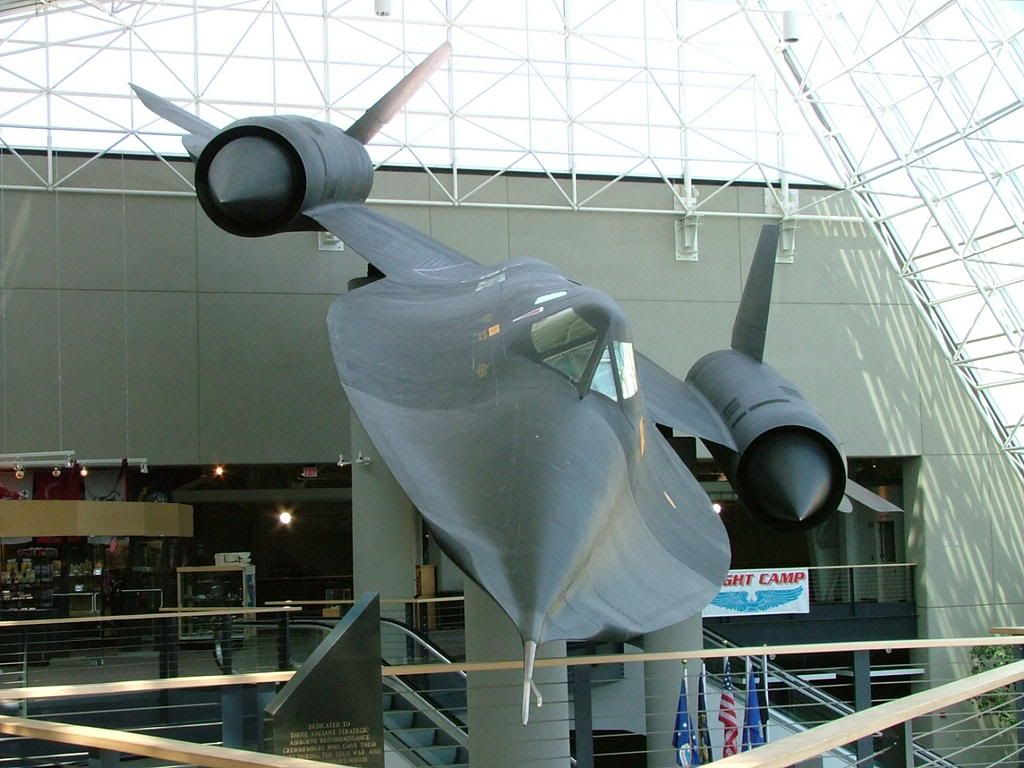 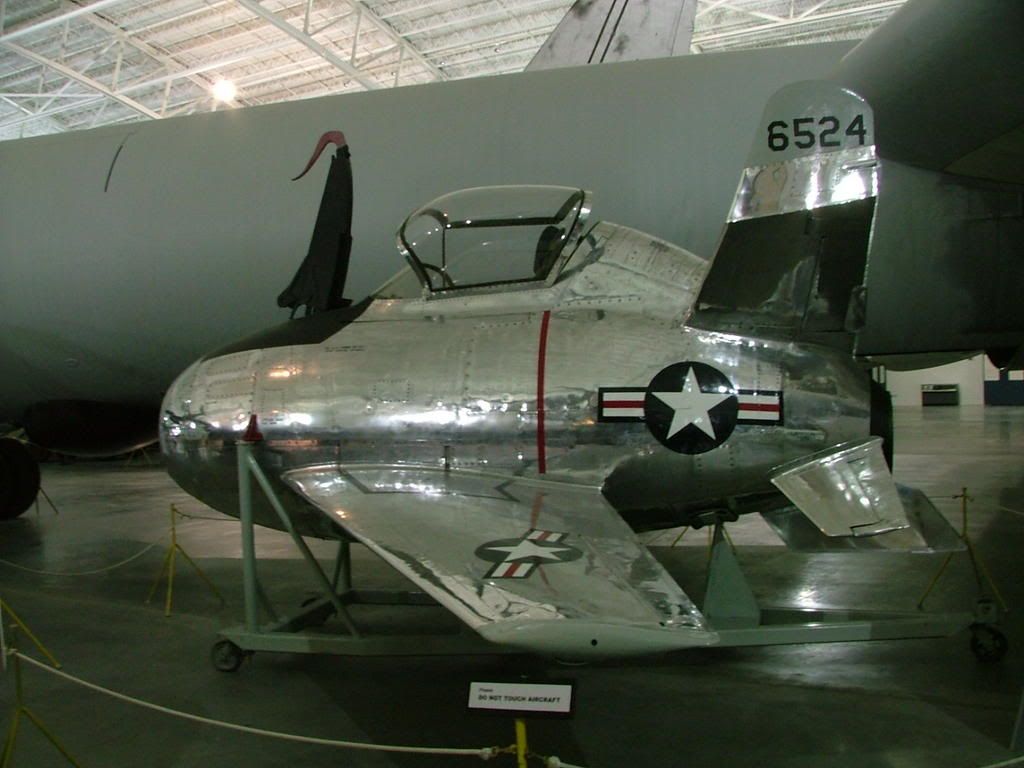 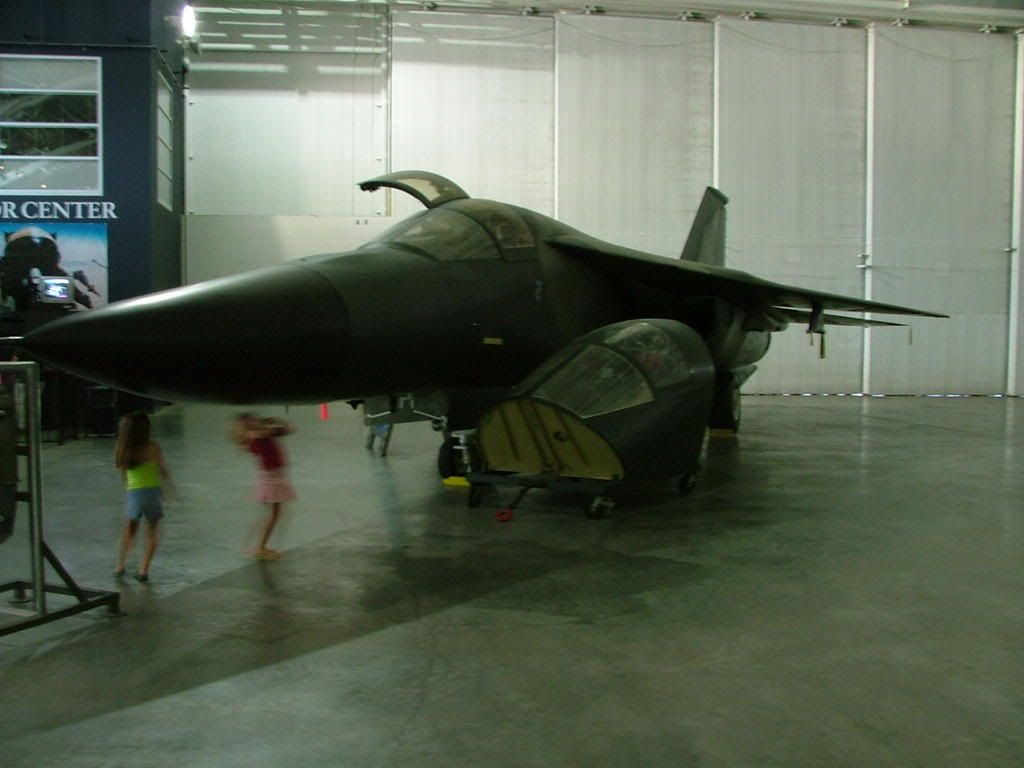 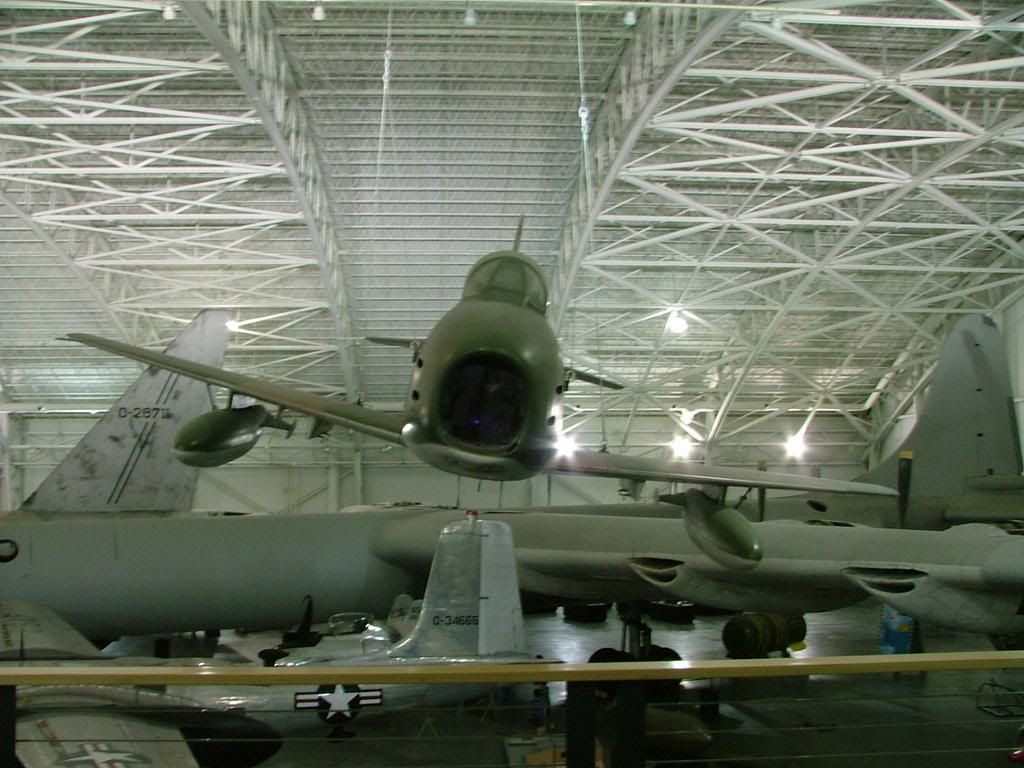 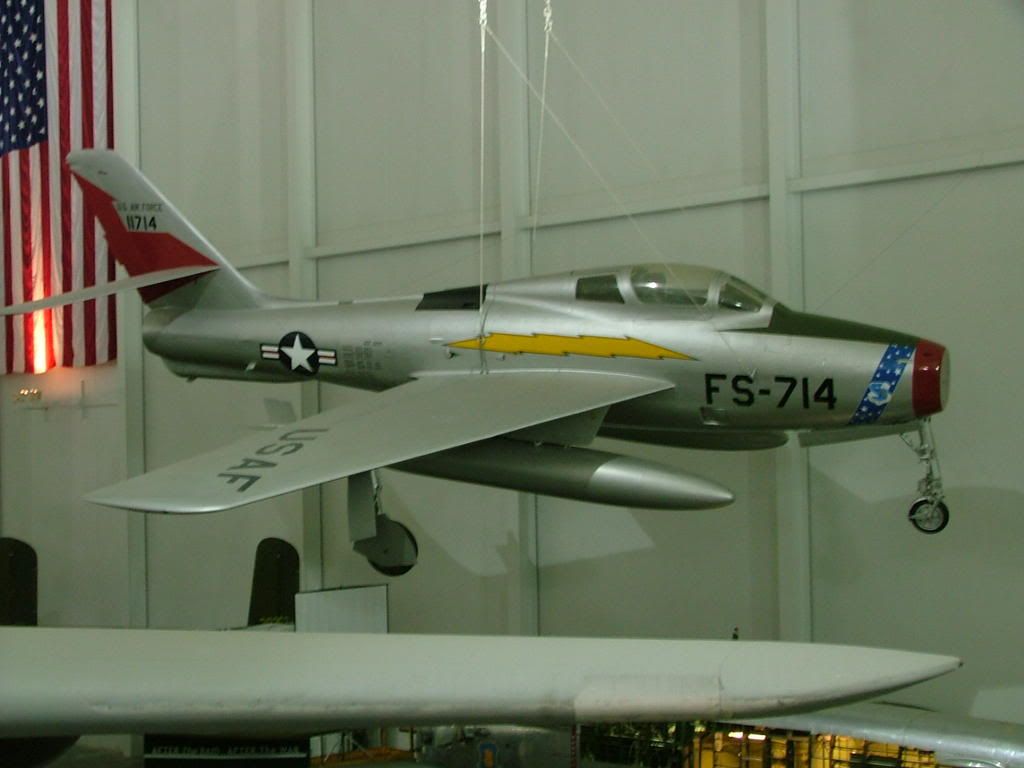  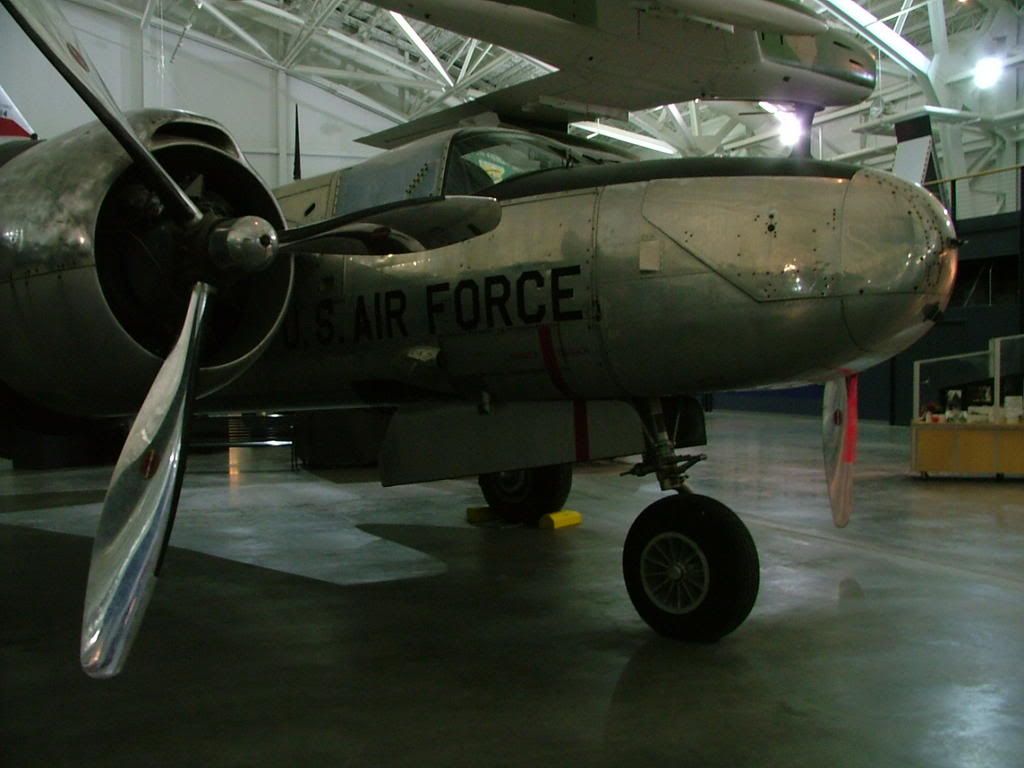 MrChips posted:Let me put it this way; F-104s could turn circles around the F-101s all day long. 
|
|
|
|
There'll be a Lancaster flyover (and 'bombing run') over London in about an hours time (12:30 GMT) for the dedication of a new memorial for Bomber Command. They'll be dropping thousands of poppies above the memorial for the people who served in Bomber Command.
|
|
|
|
drunkill posted:There'll be a Lancaster flyover (and 'bombing run') over London in about an hours time (12:30 GMT) for the dedication of a new memorial for Bomber Command. 
|
|
|
|
Wow, that looks like shredded human parts.
|
|
|
|
I'd have thought that plane hit menopause decades ago..
|
|
|
|
drunkill posted:They'll be dropping thousands of poppies above the memorial for the people who served in Bomber Command. Also, might be of interest to the people who like the A-12/SR-71: There's an interview at Gizmodo with a former A-12/SR-71 pilot. He talks about some missions, crashing an A-12 and also the differences between the A-12 and the SR-71, which I thought was quite interesting. They also did a Q&A session, I'm still waiting for that to be posted though.
|
|
|
|
VikingSkull posted:So I've discovered the joys of ATC recordings on Youtube. ATC - Lost & Clueless Pilot - Mad Controller
|
|
|
|
https://www.youtube.com/watch?v=Z2us2kOQd6g some kid out there has the BEST loving DAD in the world
|
|
|
|
I lost it at "adios" 
|
|
|
|
Interesting note. That controller was suspended (along with his supervisor I think) for several months pending an investigation after a media shitstorm regarding that recording. He was later reinstated with back pay. But what an awful time his family must have gone through. Even if the dad didn't say anything, if that kid ever saw the television with the news on, he would have felt terrible. Our union publicly condemned the controller, but I'm sure union representation was involved in the reinstatement/compensation process for him(the supervisor would have been on his own, not being a union member). It got so loving political for no reason, there was never a safety compromise. Some loudmouth in the media compared it to letting a surgeon allowing his child to make incisions on a patient. A more rational correspondent on TV said "No, it's more like composing an email to a client and letting your child click the 'Send' button." The Ferret King fucked around with this message at 06:13 on Jun 29, 2012 |
|
|
|
I'm pleased to hear that he got re-instated. When the whole shitstorm blew up I got pretty annoyed that anyone could possibly complain against it. I wish that sort of thing happened more often. If I was flying and someone had their kid on the radio like that it'd be quite fun. Not sure I could have held it together on the radio after "Adios amigo!"
|
|
|
|
The Ferret King posted:Interesting note. That controller was suspended (along with his supervisor I think) for several months pending an investigation after a media shitstorm regarding that recording. Yeah, I remember that. Anything we do has the possibility to turn into a poo poo storm because we're well payed unionized government employees. Anything that makes us look bad is going to get a lot of airtime, especially during slow news cycles.
|
|
|
|
MrChips posted:Let me put it this way; F-104s could turn circles around the F-101s all day long.
|
|
|
|

|
| # ? Apr 25, 2024 04:59 |
|
Nerobro posted:Inside? Around doesn't sound like a good combat tactic. Against AIM-4s? You'd probably be fine...
|
|
|









































